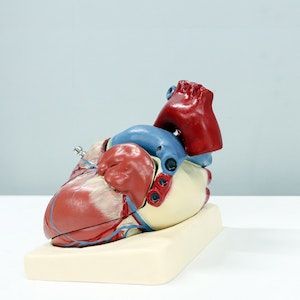Article
USPSTF Updates Screening Guidelines for Atrial Fibrillation
Author(s):
The new guidelines conclude that current evidence is insufficient to assess the balance of benefits and harms of screening for AF in adults ≥50 years.

The US Preventive Services Task Force (USPSTF) has issued an updated statement on the benefits and harms of screening for atrial fibrillation (AF) in older adults to replace the 2018 recommendation statement.
The new statement concluded that evidence is currently insufficient, thus the balance of benefits and harms of screening for AF in asymptomatic adults cannot be determined. Additional research is necessary to determine the benefits of screening for AF to prevent strokes.
“This recommendation applies to adults 50 years or older without a diagnosis of or symptoms of AF and without a history of transient ischemic attack or stroke,” wrote study author Karina W. Davidson, PhD, MASc, Feinstein Institutes for Medical Research.
Practice Recommendations
Considered the most common cardiac arrhythmia, AF is a major risk factor for ischemic stroke, with approximately 20% of patients who have a stroke associated with AF first diagnosed with AF at the time of the stroke or shortly thereafter.
As the prevalence of AF increases with age, from less than 0.2% in adults ≤55 years to about 10% in patients aged ≥85 years. However, it is uncertain whether the prevalence of AF differs by race and ethnicity.
The current recommendation statement applied to adults ≥50 years without a diagnosis of symptoms of AF and without a history of transient ischemic attack or stroke. Investigators in the statement noted that clinicians should use clinical judgment to screen and how to screen for AF.
Different intensities of screening for AF were studied, including an electrocardiogram at a clinical visit, intermittent screening by recording heart rhythm with a portable device, or continuously. The USPSTF categorized these as 1-time screening strategies, intermittent screening strategies, and continuous screening strategies.
The statement wrote the primary rationale for screening for AF in asymptomatic persons is to initiate oral anticoagulant medications in persons at sufficiently high risk to prevent a thromboembolic event.
Those with clinical AF not receiving anticoagulant therapy have an increased risk of stroke. Despite stroke often being the first sign of AF, the current evidence was said to be insufficient for the USPSTF to recommend for or against screening for AF.
Update Evidence
The 2018 USPSTF statement concluded the evidence was insufficient to assess the balance of benefits and harms of using ECG to screen for AF.
In order to update the recommendation, the USPSTF performed a systematic review on the benefit-harm of screening for AF in older adults, the accuracy of screening tests, the effectiveness of screening tests to detect previous undiagnosed AF compared to usual care, and the benefits and harms of anticoagulant therapy for the treatment of screen-detected AF in older adults.
For detection of previously undiagnosed AF, a total of 9 studies on the accuracy of potential screening tests for AF were screened. From this number, 2 studies of single-lead ECG devices with automated AF detection algorithms used as a 1-time screening test reported sensitivities of 0.88 and 0.99 and specificities of 1.0 and 0.76 when compared to a single 12-lead ECG interpreted by a cardiologist.
Then, the USPSF found 4 randomized clinical trials comparing different 1-time screening approaches for the detection of AF with usual care or no screening. Of the 4 trials, the Screening for Atrial Fibrillation in the Elderly (SAFE) trial found a statistically significant increased detection rate of AF (0.6% absolute increase) when comparing no intervention with ECG. However, no difference was observed between clinician reminders for pulse palpation and screening with ECG in the detection of new cases of AF.
Further, the USPSTF found 2 trials using an intermittent screening approach and 2 trials that used a continuous screening approach. The Assessment of Remote Heart Rhythm Sampling Using the AliveCor Heart Monitor to Screen for Atrial Fibrillation (REHEARSE-AF) trial found a statistically significant 2.8% absolute risk increase in detection of AF for screening versus no screening at 12 months.
The mHealth Screening to Prevent Strokes (mSToPs) trial and the SCREEN-AF reported statistically significant absolute risk increases of 3% and 4.8% in detection of AF for screening versus no screening or delayed screening.
Additionally, STROKESTOP was powered to detect health outcomes, reporting no significant difference in ischemic stroke, systemic embolism, or all-cause mortality in the invitation to screening group, compared with the control group at a median follow-up of 6.9 years (hazard ratio, 0.92, 95% CI, 0.83 - 1.01 for ischemic stroke; HR, 1.10, 95% CI, 0.76 - 1.59 for systemic embolism; HR, 0.96; 95% CI, 0.92 - 1.01 for all-cause mortality.
The USPSTF found no trials reported on the benefits of anticoagulant therapy in screen-detected populations. Other trials reported on the benefit of anticoagulant therapy for clinical AF, finding warfarin treatment over a mean of 1.5 years was associated with reductions in all-cause mortality (pooled RR, 0.68; 95% CI, 0.50 - 0.93), ischemic stroke (pooled RR, 0.32; 95% CI, 0.20 - 0.51), and moderately to severely disabling stroke (pooled RR, 0.38; 95% CI, 0.19 - 0.78) compared to control.
Research Needs
As a final note, investigators pointed to gaps in research that are needed to address certain issues. These included randomized trials enrolling asymptomatic patients that directly compared screening with usual cases and that assess both health outcomes and harms are needed to understand the balance of benefits and harms of screening for AF, how to best optimize the accuracy of screening tests, and understanding the risk of stroke associated with subclinical AF.
“In response to comments, the USPSTF wants to clarify that the I statement is not a recommendation against screening for AF; it indicates that the evidence is insufficient to recommend either for or against screening,” the statement said.
The USPSTF recommendation statement, “Screening for Atrial Fibrillation,” was published in JAMA.





